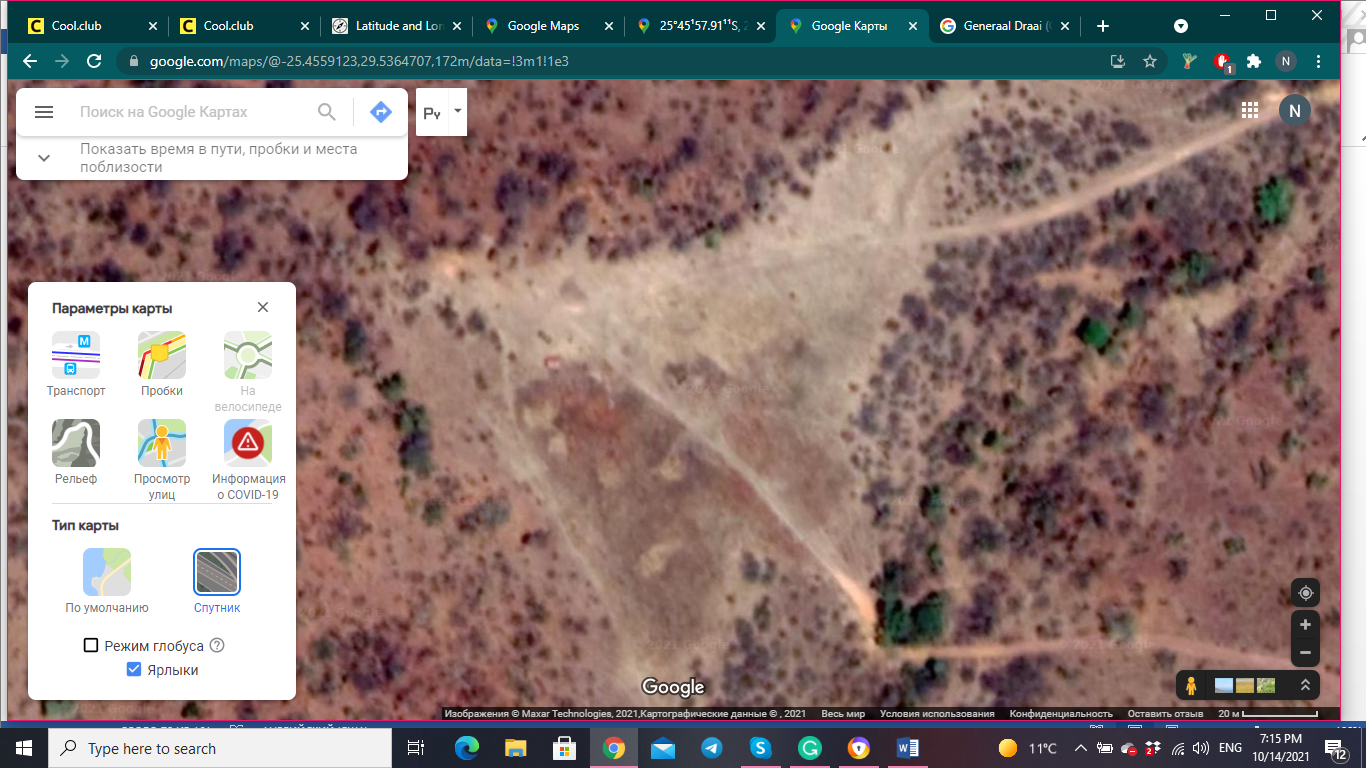Introduction
My grandfather’s farm has been left unattained for a couple of years. All the equipment is outdated, and the place itself has not been utilized for a long time. My plan is to transform it into a profitable garlic farm using all the necessary tools and knowledge of crop production. The Holy Bible specifically mentions people being God’s field and building (1 Corinthians 3:9 NIV). The farm itself will benefit the population by providing people with healthy and high-quality food. Garlic has been used in medicine for many years. Besides this plant being a delicious food used in culinary, its antibacterial and immune-boosting properties contribute to people’s health. Moreover, the crops are profitable, which is another evidence that a garlic farm can be a successful long-term idea in terms of revenue and social wellness.
The land is located in Mpumalanga, in close proximity to the Wonderfontein Station. The climate is favorable for garlic crops, with moderate summers and cold winters. Garlic is a relatively resistant plan that can survive cold temperatures. Moreover, the plan is to plan in the spring and harvest in autumn. Based on this schedule, the moderate summers reduce the risk of damaging the seeds, unlike during more harsh temperatures.

Crop Environment
While garlic is relatively resistant to temperature changes, there are several aspects that need to be considered when planting it. First, it is important to ensure that the soil is well-drained to avoid high moisture levels that can damage the crop. As presented in Figure 1, the precipitations are moderate, as is the temperature during summers. This will ensure a favorable environment for the garlic to develop and grow until it is harvested in the autumn.

The soil is mostly loam, which is the type that can hold a lot of moisture but also has the ability to drain itself. The other type of soil in the land is clay soil, which is also an excellent matter that contributes to the healthy growth of plants, specifically garlic. While the soil will be appropriately fertilized and an irrigation system will be put in place, the initial crop environment is favorable and promising.
Market / Employees / Financial Institutions
The plan is to enter the market with an emphasis on healthy foods. A growing target audience is interested in healthy plants, and garlic fits the criterion. The market will most likely have a positive overview of the new product because of the increasing interest in garlic and supplements. Moreover, the array of target consumers is vast since the product can be used in culinary and supplementation, allowing for a more considerable demand.
The plan is to hire three employees to operate the farm and do daily activities in all areas, from planting to crop harvesting and maintenance. Employees will work full-time and have two days off every week in a cyclical schedule so that at least two workers are at the farm every day. Employees will receive the schedule and work conditions as favorable. Such stable job positions are often preferred on the job market, so there will be no difficulties in finding people for these particular tasks.
Since the farm will be a legitimate business, maintaining a healthy relationship with financial institutions such as banks and insurance companies is crucial. Banks, in particular, will receive the idea as favorable since a garlic farm is often an excellent investment that becomes profitable in a relatively short time. Moreover, there is no need to take extra loans for land since it is already personal private property.
Crop Soil and Fertility Plan
First, the soil will be tested to measure the nitrogen level and the fertilizer that will be used during the next steps. Other nutrients that will be examined before planting are phosphorus, sulfur, and potassium. According to researchers, higher potassium levels correlate with a bigger bulb diameter and a higher number of cloves in each bulb (Jiku et al., 2020). The soil will be tilted before the garlic is planted. Organic compost will be used as a fertilizer. If the test results show low levels of organic matter, composted manure will be used since it has beneficial effects on the crops. As mentioned before, early spring will be the best time for planting. Several cover crops will be used to strengthen the soil and increase its fertility. Farmers often use such plants as buckwheat, mint, eucalyptus, oregano and parsley for such reasons. As illustrated prior, garlic is a plant that requires well-drained soil with a pH of 6-7. The level of pH will be tested before planting, and the results will influence irrigation and fertilizer used subsequently.
The plan is to plant one acre with garlic seeds. One hundred square feet of soil usually require one pound of fertilizer. Around 450 pounds of fertilizer will cover the entire area. Moreover, it is essential to ensure a high nitrogen level before planting the garlic. The plan is to fertilize the soil every four weeks before working with the seeds. The schedule will result in an efficient soil environment that will contribute to high production and a low chance of risks for the crop.
Irrigation Plan
The irrigation system that will be more effective for the garlic farm is a subsoil drip irrigation system. The crops will be watered three times a week during the summer and once a week during colder seasons (in case the spring when planting is scheduled is cold).

A tank will be installed in the center of the farm with a filter to make sure the water is not contaminated. Pipes will be placed on the field’s entire perimeter to reach every plant. However, only half of the territory will be planted because garlic needs a new environment every year and overusing the same soil with one crop will cause it to be less fertile. Furthermore, the system reduces the risks of pest infestation. The underground pipes will be designed to reassure each plant receives enough water (one inch per week). Moreover, irrigation will depend on the level of development between germination and the last step, which is harvesting. Between germination and the end of leaf development, soil moisture has to be kept at 80%. This is the time period when watering is performed at the highest levels. Then, between the development of all leaves and the drying out, the moisture has to be kept at around 70%. The lowest irrigation rate will be between the mass drying and harvest with 60% moisture.
The schedule illustrated how watering has to continually decrease yet be maintained at an optimal level.
Irrigation System Cost
As mentioned before, a subsurface irrigation system will be installed. The preferred way is drip irrigation due to the efficiency of this method in terms of water waste and less labor work. The system has to include a timer that can be regulated, pipes, pressure regulators, water filters, and the water tank itself.

The parts will be assembled personally by the employees and installed, which helps save resources and avoid extra costs for professional installation. This is why the overall irrigation system plan averages at around $2,200. While drip systems are considered expensive, they are cost-effective in the long run. Some of the benefits are less water waste, more control over the timing and the amount of water needed for each plant, and a reduction in manual labor work. While the investment is significant, the revenue will cover the expenses within the first year.
Pest Control
Garlic is a natural pesticide, which is why many farms use this plant to keep other crops safe. However, there are certain bugs that target garlic, which is why pest control is an essential step in farming activities. Moreover, several diseases may compromise the harvest and cause issues for farmers. According to researchers, white rot is one of the most common diseases (Inglis et al., 2020). Other potential issues that may affect the crop are purple blotch, fusarium rot, black mold, and bacterial brown rot. As mentioned before, specific bugs may also interfere with the garlic on some level. Bulb mites, live rove beetles, leafminers, nematodes, and onion maggots are among them.
Organic pest control strategies will be used to mitigate these risk factors. First, the crop will be rotated every year. If the first half of the land will be used for the initial harvest, the second one will be utilized in the following year. Moreover, each seed will be carefully examined before planting to avoid contaminating other healthy ones. The seeds will be soaked in hot water for half an hour before placing them into the soil. After the leaves are developed, regular checks will be performed for the purpose of spotting the plants that need to be destroyed to stop the disease from spreading. It is also essential to keep the area weed-free since some harmful insects tend to favor such plants. Nutsedge, clovers, thistle, Bermuda grass, and bindweeds are among the most common weeds that can interact with crop production. Crop rotation, planting the seeds relatively far away from each other, and regularly monitoring the soil are the solutions to this potential problem.
Crop Harvesting Plan
The autumn season harvesting will be executed as soon as the tops of the leaves turn yellow. It is important not to wait until they are fully dehydrated. If the garlic is left in the soil for too long, there will be a chance that the cloves will separate, which makes them vulnerable to diseases and insects. The garlic cloves will be stored in a dry spot for two weeks as soon as the harvesting is over. Air circulation is essential, which is why the storage facility needs to be spacious. The two weeks will be enough for the crops to get completely dry. After this time period, the product will be sold and the remaining stored at an optimal temperature for future utilization. The plan is to keep the garlic fresh and ready to be marketed for as long as possible, which is why a 2-week quarantine will be implemented. After the crop is fully dry, the chance of the product getting bad will be minimal if stored at the right temperature and humidity.
Conclusion
An effective irrigation system, fertilizer schedules, harvesting plan, and pest control measures will turn the old and stagnant farm into a profitable business. Harvesting garlic is not only favorable in terms of revenue but also serves a greater purpose, such as promoting healthy foods and encouraging the population to consume products beneficial for the immune system. A proficient plan will lead to large crop productions and a subsequent increase in the amount of garlic acquired during each harvest.
References
Climate Data. (n.d.). Mpumalanga climate and rainfall graphic. 2021, Web.
Google Maps (n.d.). Mpumalanga. 2021, Web.
Inglis, P. W., Mello, S. C., Martins, I., Silva, J. B., Macêdo, K., Sifuentes, D. N. and Valadares-Inglis, M. C. (2020) ‘Trichoderma from Brazilian garlic and onion crop soils and description of two new species: Trichoderma Azevedoi and Trichoderma peberdyi’, PLOS ONE, 15(3).
Jiku, M. A., Alimuzzaman, M., Singha, A., Rahaman, M. A., Ganapati, R. K., Alam, M. A. and Sinha, S. R. (2020) ‘Response and productivity of garlic (Allium sativum L.) by different levels of potassium fertilizer in farm soils’, Bulletin of the National Research Centre, 44(1).
